4.06.2020
Preparations resume for Vega’s upcoming mission with 53 small satellite passengers

Arianespace personnel are utilizing smart glasses during certain payload checkout activities for Flight VV16 at the Spaceport in French Guiana, enabling customers to remotely monitor operations performed on satellites that will be orbited this month by the Vega light-lift launcher.
The launch campaign has resumed for Arianespace’s next mission, which will be the proof-of-concept flight with the Vega launcher’s “ride-share” configuration – known as the Small Spacecraft Mission Service (SSMS).
Scheduled for the middle of this month from the Spaceport in French Guiana, it will loft 53 micro- and nanosatellites for the benefit of 21 customers, deploying these payloads into Sun-Synchronous orbit.
For the mission, designated Flight VV16 in Arianespace’s launcher family numbering system, Vega will carry seven microsatellites weighing from 15 kg. to 150 kg., along with 46 smaller CubeSats. These spacecraft are to serve various applications, including Earth observation, telecommunications, science, technology and education.
The maiden flight for Europe’s SSMS
The SSMS program, initiated by the European Space Agency (ESA) with the European Commission’s contribution, will boost Arianespace’s ability to offer ride-share solutions tailored for the flourishing small satellite market.
Avio, the Italian company that is production prime contractor for Vega launch vehicles, also developed the SSMS ride-share concept. Design authority for the multi-payload dispenser system is SAB Aerospace, an independent Italian SME (small/medium enterprise).
The SSMS dispenser is composed of modular components that are assembled as needed to serve as the interface with grouped payloads composed of microsatellites and CubeSats. Capable of accepting a full range of payload combinations, the SSMS configuration has been designed to be as responsive as possible in meeting the launch service market’s needs for both institutional and commercial customers.
Launch team members arrive from Europe
Assembly of Flight VV16’s light-lift Vega launcher was performed during February on the Spaceport’s SLV launch pad, but was followed in mid-March by an operations stand-down due to the COVID-19 pandemic and the need to fully implement sanitary protective measures.
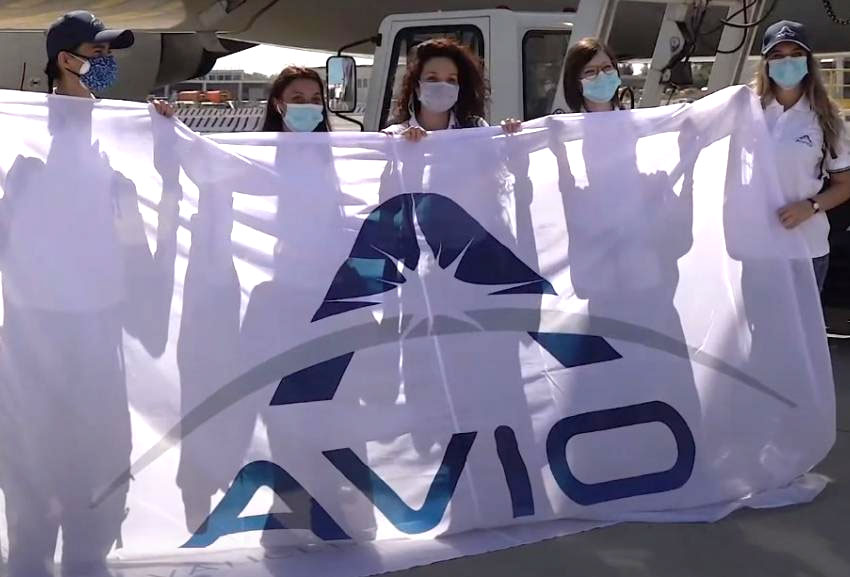
Avio members of the launch team for Arianespace Flight VV16 were flown from Rome to Cayenne aboard a chartered jetliner.
With the decision to restart operational activities at the Spaceport, a team of some 70 people – led by engineers and technicians from Avio, and including personnel from other companies – was flown aboard a chartered jetliner from Europe to French Guiana.
After arriving at Félix Eboué Airport near the capital city of Cayenne, the team members underwent a quarantine period before being authorized to work at the launch site.
“We are delighted to have resumed operations,” said Thierry Wilmart, who heads the Missions & Customers Department at Arianespace. “Protective measures relating to COVID-19 have been taken throughout the launch site’s facilities, and mission personnel have received instructions on respecting the sanitary guidelines.”
Wilmart noted that among the first activities was an evaluation of using smart glasses during payload preparation activities with several of the spacecraft passengers on Flight VV16. “The results are very positive, and this efficient means of being connected enables customers to remotely monitor operations conducted by Arianespace personnel on their satellites.”

The Vega launcher for Arianespace Flight VV16 is shown taking shape during integration activity at the Spaceport in February. This photo sequence shows the solid propellant stages being “stacked” at the Vega Launch Complex (SLV), with the Zefiro 23 second stage’s integration on the P80 first stage (at left), followed by installation of the Zefiro 9 third stage atop them (center). In the photo at right, Vega receives its liquid-propellant Attitude and Vernier Upper Module (AVUM).
Quelle: arianespace
----
Update: 17.06.2020
.
FSSCat/Ф-sat-1 ready for launch
The first artificial intelligence to be carried onboard a European Earth observation mission will be launched this week from Europe’s spaceport in Kourou, French Guiana. The pioneering artificial intelligence technology named ɸ-sat-1, pronounced PhiSat-1, will be the first experiment to improve the efficiency of sending vast quantities of data back to Earth.
Earth-observing satellites are delivering a wealth of data on a daily basis, not only to understand how our planet works, but also for use in a myriad of practical applications to improve our lives. With today’s need to understand, monitor and address the current climate crisis, the demand for efficient data is more essential than ever.
As part of the drive to foster innovation and new technology, ESA has worked alongside its partners to develop ɸ-sat-1 – Europe’s first artificial intelligence Earth observation mission – which will demonstrate how satellite data, coupled with digital technologies, can bring benefits to business, industry and science.
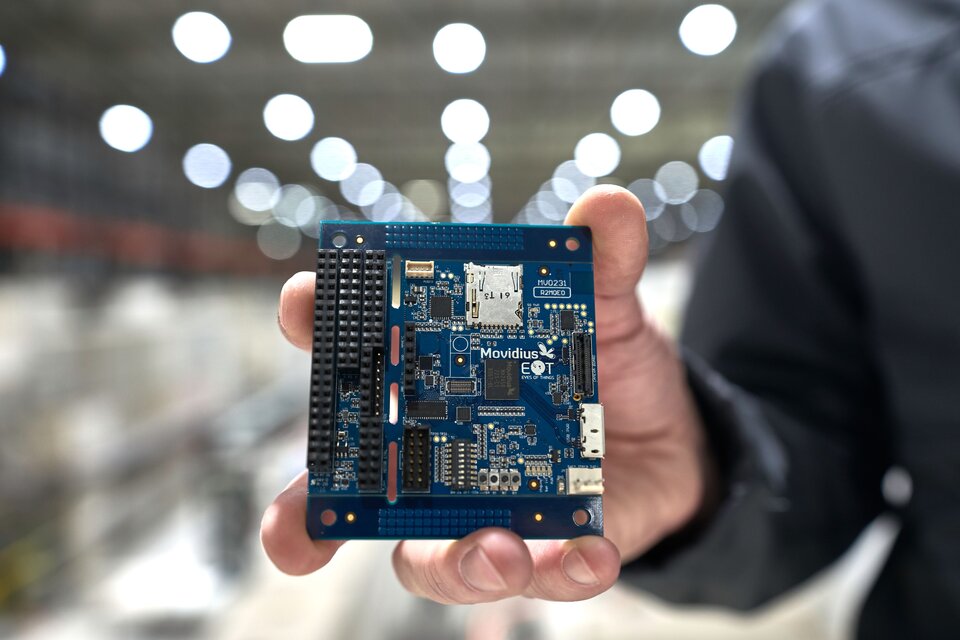
ɸ-sat-1 will acquire an enormous number of images that will allow scientists to monitor changes in vegetation and water quality, detect urban heat islands and carry out experiments on the role of evapotranspiration in climate change. ɸ-sat-1’s hyperspectral camera will image Earth in the visible, near-infrared and thermal-infrared parts of the electromagnetic spectrum.
“However, some of the images acquired will not be suitable for use because of cloud cover,” explains Massimiliano Pastena, ɸ-sat Technology Engineer at ESA. “The ɸ-sat-1 artificial intelligence will automatically filter these images out, so that only usable data are returned back to Earth. This will make the process of handling these data more efficient, allowing users access to more timely information.”
ESA’s Director of Earth Observation Programmes, Josef Aschbacher, comments “ESA is continuously pushing innovation to the extreme. ɸ-sat-1 combines the power of artificial intelligence with innovative Earth observation CubeSat technology. This is an experiment to test new technologies and to lower the cost of space missions. It is a crucial step to open up completely new opportunities in the fast-developing domain of Earth observation that will allow tailored information for customised services. ESA is also keen to gain experience on how this combination of technologies could eventually be used in larger-scale operational spacecraft.
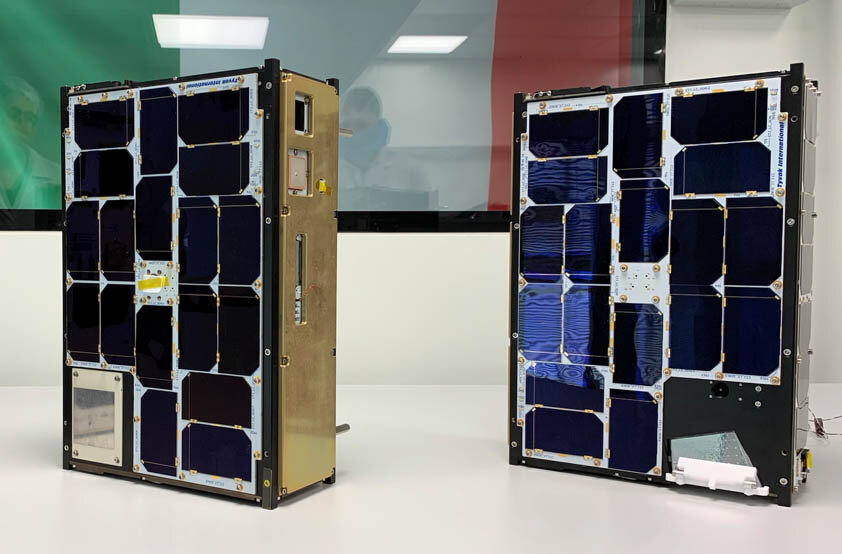
“ɸ-sat-1 is an important step forward for Earth observation satellite missions and I am very proud that we at ESA, and our industry partners, are leading the way with this new approach for Earth observation.”
ɸ-sat-1 is an enhancement of the Federated Satellite Systems mission, or FSSCat for short. As the overall 2017 Copernicus Masters winner, FSSCat, was proposed by Spain’s Universitat Politècnica de Catalunya and developed by a consortium of European companies and institutes. The FSSCat mission is based on two CubeSats, each about the size of a shoebox, that will collect data to measure, for example, soil moisture, sea-ice extent and sea-ice thickness.
FSSCat/ɸ-sat-1 will be launched on Friday on a Vega rocket from Europe’s spaceport in French Guiana. Follow the live streaming of the launch on ESA WebTV. Liftoff is currently scheduled for 03:51:10 CEST (01:51 UTC, 10:51 on Thursday night French Guiana time).
About SSMS
Vega’s Small Spacecraft Mission Service (SSMS) dispenser provides launch opportunities for multiple light satellites with an overall mass ranging from 0.2 kg CubeSats up to 400 kg minisatellites.
The SSMS has a lightweight modular design comprising a lower and upper part each with attachments that can be used to accommodate a range of configurations of satellites depending on requirements.
About Vega
Vega is a 30 m-high, four-stage launch vehicle operating out of Europe’s Spaceport in French Guiana. It is designed to lift between 300 kg and 1.5 tonnes of payload depending on the orbit and altitude.
ESA’s upcoming Vega-C, a more powerful version of Vega, will offer an extra 700 kg of capacity and enlarged volume within a wider launcher fairing at a similar cost to Vega – allowing even more passengers per individual rideshare launch at significant lower cost per kilogram.
Quelle: ESA
+++
Arianespace VV16 Mission to launch GHGSat, Kepler and exactEarth satellites
An Arianespace Vega launch vehicle is scheduled to deliver 53 satellites to orbit this Thursday, including three Canadian satellites on the VV16 mission.
Arianespace VV16 mission
The Arianespace VV16 mission will use the smaller Vega launch vehicle for the Small Spacecraft Mission Service (SSMS). This is a European Space Agency (ESA) proof of concept flight that will use a new satellite dispenser. It’s hoped that the new modular dispenser will demonstrate its usefulness which should be reflected in a lower cost to launch for small satellite operators.
This is the first mission in 2020 for the Vega which had been delayed due to a previous launch failure, and then the pandemic. The 53 satellites come from 21 customers and 13 countries.
Planet Labs accounts for 14 Flock 4v satellites, Swarm Technologies has 12 SpaceBee satellites and Spire has 8 Lemur-2 satellites. ESA has 5 satellites. Slovenia is launching their first satellite, NEMO-HD, built by Toronto’s Space Flight Laboratory.
The launch will be broadcast live on SpaceQ around 9:30 pm EDT on Thursday, June 18.
Watch: VV16 mission and the new ESA small satellite dispenser.
Canadian satellites
There are three Canadian satellites on the Vega launch. They include TARS for Kepler Communications, ESAIL for exactEarth, and Iris for GHGSat.
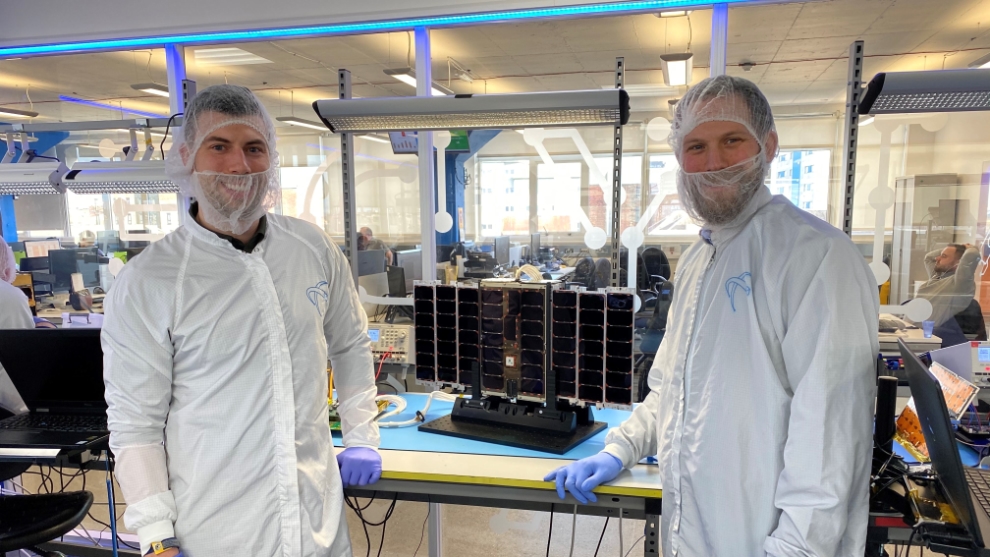
TARS is the third and last Internet of Things (IoT) demonstration satellite Kepler will launch. The company expects to launch several more satellites this year, though it won’t disclose how many, using their new GEN 1, or Generation 1 platform, and which are manufactured by Kepler in their downtown Toronto facility.

For exactEarth, the ESAIL satellite, is the product of a partnership with ESA. It is the first commercial satellite under ESA’s maritime SAT-AIS (Automatic Identification System) ship tracking program.
The satellite was built by LuxSpace as part of the ESA ARTES (Advanced Research in Telecommunications Systems) program which Canada participates in.
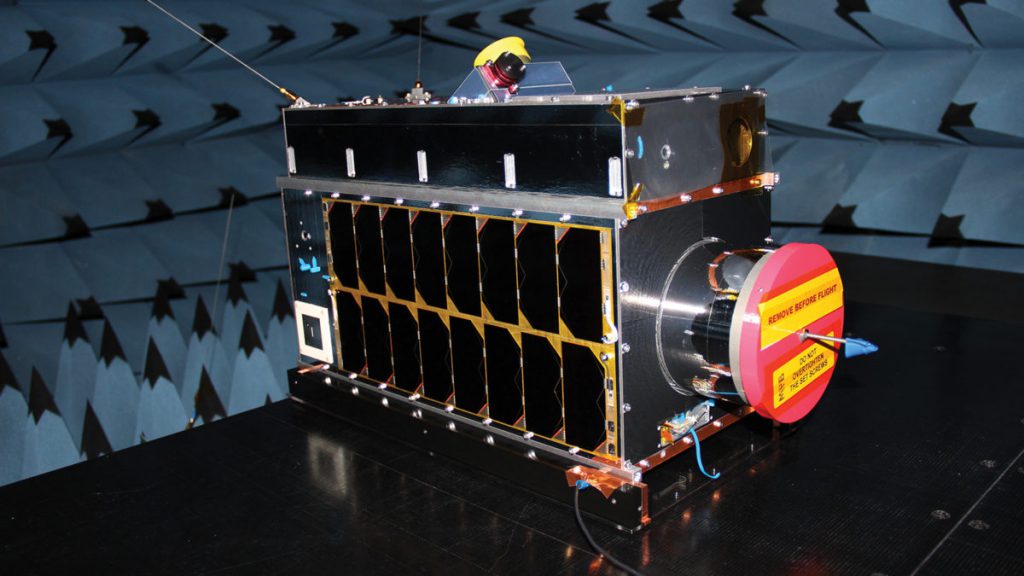
In an email exchange with Stephane Germain, CEO of GHGSat, Germain told us that “this is the (twice-delayed) culmination of 4 years of lessons learned. We’re excited to show the world what Iris can do!”
Iris (GHGSat-C1) is the second satellite GHGSat will launch. The first, Claire (GHGSat-D), has been a workhorse and surpassed its life expectancy, though it did have a few issue.
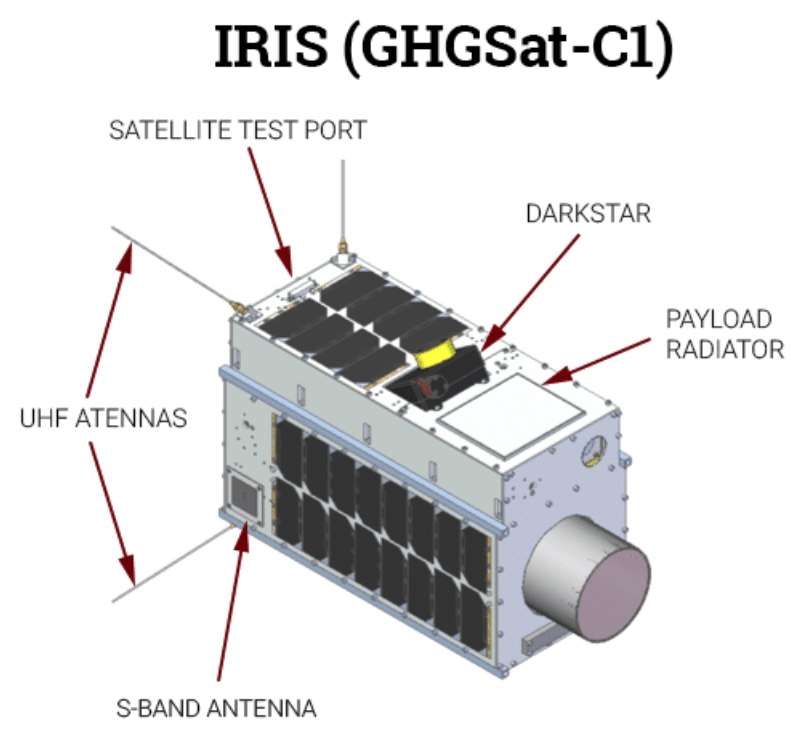
GHGSat has built a strong following and developed important relationships with both government and industry. The company plans to launch a small constellation of emission detecting satellites as well as deploying sensors in planes.
Iris will have short commissioning period said Germain. “Based on our experience with GHGSat-D (Claire) – likely only 2 weeks. We have a series of ‘firsts’ planned through the summer and early fall.”
The company will also launch GHGSat-C2 (Hugo) in December, if the schedule holds.
The company last week also launched a podcast last week. Germain said the podcast “provides a new medium (to) reach out that is often easier for our stakeholders to consume than reading articles and case studies. We’re still testing it out, but I would expect monthly updates.”
Prior to the launch this Thursday, GHGSat is expected to make a significant announcement.
Quelle: SpaceQ
----
Update: 19.06.2020
.
Launch postponement for Flight VV16 due to weather conditions at the Spaceport
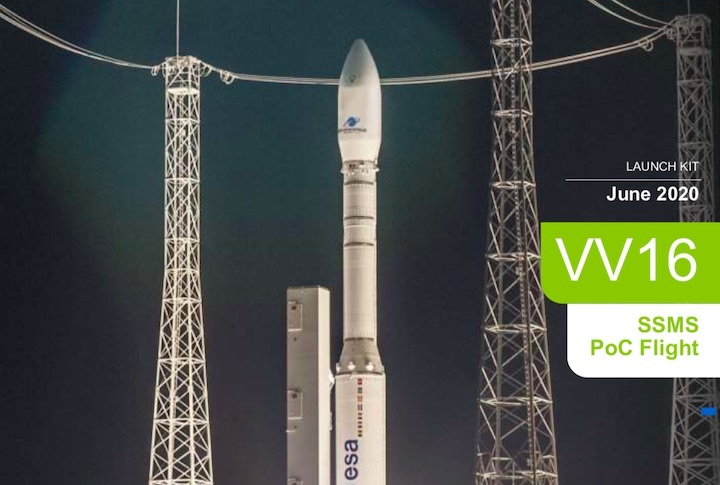
Unfavorable high-altitude wind conditions over the Guiana Space Center has led to a decision that the final preparation phase for Arianespace’s Flight VV16 with Vega could not be initiated as planned today.
Therefore, tomorrow’s scheduled liftoff from French Guiana has been postponed.
Depending on suitable weather conditions, the soonest possible launch date for this Small Spacecraft Mission Service (SSMS) Proof of Concept flight – to be performed at the service of 21 customers – is Saturday, June 20, at the following precise liftoff timing:
- 9:51:10 p.m., Washington, D.C. time,
- 10:51:10 p.m., Kourou, French Guiana time,
- 01:51:10, Universal Time (UTC), on June 20,
- 03:51:10 a.m., Paris and Rome time, on June 20.
The Vega launch vehicle and its 53 spacecraft payloads are in stable and safe conditions.
Quelle: arianespace
----
Update: 28.06.2020
.
Weather postponement for the Vega rideshare mission with Europe’s Small Spacecraft Mission Service
Arianespace’s first rideshare flight for Europe’s Small Spacecraft Mission Service (SSMS) was postponed tonight due to unfavorable winds at altitude above the Spaceport in French Guiana.
The Vega launcher and its payload of 53 small satellite passengers remain in a stable and safe condition on the SLV Launch Complex.
Subject to a favorable evolution of the weather conditions, another attempt will be made on Sunday, June 28.
Quelle: arianespace
----
Update: 30.06.2020
.
Cluster of international satellites ready for ride into orbit on Vega rocket
The launch has been delayed until Sunday at 9:51 p.m. EDT (0151 GMT Monday).

Debuting a two-tier structure designed to accommodate dozens of small satellites on a single mission, an Italian-made Vega rocket is set for liftoff Saturday night from the northeastern coast of South America on a flight to demonstrate European industry’s answer to growing rideshare launch demand.
Funded by the European Space Agency, the adapter structure was designed and manufactured in the Czech Republic and Italy. Engineers say it can be reconfigured in different arrangements to allow for launches with varying numbers of CubeSats and larger minisatellites as large as a refrigerator.
Arianespace and Avio — the Vega launch service provider and the Vega prime contractor — hope the Small Spacecraft Mission Service, or SSMS, multi-satellite dispenser can be launched once per year if there’s enough demand from international satellite companies and European government agencies.
There are 53 satellites from 21 customers in 13 countries — including ESA member states and the United States — aboard the Vega rocket awaiting liftoff from the Guiana Space Center in South America at 9:51:10 p.m. EDT Saturday (10:51 p.m. EDT; 0151 GMT Sunday).
The Vega rocket’s solid-fueled first stage will propel the launcher north from French Guiana. After successive burns by the Vega’s second and third stages, the rocket’s restartable liquid-fueled fourth stage will ignite two times to place the satellites in a polar sun-synchronous orbit orbit 320 miles (515 kilometers) above Earth at an inclination of 97.45 degrees.
The seven largest satellites will separate from the rocket in that orbit between 40 and 53 minutes after liftoff. Two more brief firings by the Vega’s fourth stage will boost the remaining 46 nanosatellites into a slightly higher 329-mile-high (530-kilometer) orbit with an inclination of 97.51 degrees.
The last of the CubeSats will separate from the Vega upper stage around an hour and 45 minutes into the mission.
The rideshare launch was supposed to occur last year, but a Vega rocket failed during a flight in July 2019. The launch Saturday night will be the first Vega mission since the failure, which engineers traced to a structural failure on the Vega’s second stage.
Before the failure, the Vega rocket had amassed 15 straight successful launches since its debut in 2012.
Days before the Vega rocket’s return-to-flight launch date in March, Arianespace suspended launch preparations due to the coronavirus pandemic. Launch preparations resumed in May, and the mission was set to lift off June 18, but high winds have kept the rocket on the ground.
Now all systems appear ready for liftoff Saturday night.

“This flight heralds a new era in rideshare opportunities for small satellites and shows our commitment to extending Europe’s access to space capabilities to serve European institutions, strengthen our space industry and grow our economy,” commented Renato Lafranconi, Vega exploitation program manager at ESA.
“New customers are keen to take their place on our next rideshare,” Lafranconi said in a statement. “This gives us a lot of confidence that this new service will become a vital element of the Vega launch service.”
“This SSMS dispenser makes effective use of every available space thanks to a modular design approach,” said Giorgio Tumino, ESA’s Vega and Space Rider program manager. “The lower section is hexagonal and can hold six nanosatellites or up to a dozen CubeSat deployers. The upper section is used for microsatellites, minisatellites and small satellites. The lower section can also be used independently, coupled with a larger satellite replacing the top section.”
The SSMS structure is designed to be as light as possible, using low-density aluminum sandwich panels covered in a carbon fiber reinforced polymer skins, according to ESA.
“Our objective is to ensure maximum flexibility, with an SSMS dispenser able to be assembled very close to the launch date and to meet the requirements of any mission,” Tumino said.
The first SSMS mission set for launch Saturday is a proof of concept flight to demonstrate the Vega rocket’s capability to deliver clusters of small satellites into orbit. The mission’s payload of 53 satellites sets a record for the most spacecraft launched on a single European rocket.
The satellites on the SSMS proof of concept flight range in mass between about 2 pounds (1 kilogram) and 330 pounds (150 kilograms), according to Arianespace.
The highest number of satellites launched on a single Vega rocket to date was nine spacecraft on the launch vehicle’s inaugural flight in 2012.
An Indian Polar Satellite Launch Vehicle carried 104 small satellites into orbit in 2017, a record for the most spacecraft launched on one rocket. SpaceX has launched 60 Starlink Internet satellites — each weighing about a quarter-ton — on individual Falcon 9 rockets multiple times.
Officials aggregated satellites from the European Space Agency and commercial companies for the SSMS proof of concept flight.
The satellite sitting on top of the stack was built by Maxar Technologies. In its press kit for the launch, Arianespace describes the satellite as a “small experimental communication spacecraft,” but the launch provider says the the satellite’s final customer is “undisclosed.”
The 304-pound (138-kilogram) satellite is believed to be a technology demonstration spacecraft named Athena. PointView Tech, a subsidiary of Facebook, is testing technologies that could be used in a future constellation of small satellites to provide global broadband Internet services. Athena is PointView Tech’s first satellite.

A 330-pound (150-kilogram) spacecraft developed by the Italian space company D-Orbit is also riding to space on the Vega rocket. D-Orbit’s ION CubeSat Carrier is loaded with 12 SuperDove Earth-imaging CubeSats for Planet, which will be released after the carrier craft separates from the Vega rocket’s upper stage in orbit.
If you include the 12 SuperDoves inside the ION CubeSat carrier, the SSMS proof of concept mission is actually launching with 65 satellites.
D-Orbit plans to develop more capable CubeSat carriers for future missions with propulsion systems that could maneuver customers’ nanosatellites into different orbital slots after separation from their launch vehicle, giving CubeSat operators the ability to still put their spacecraft into tailored orbits even if riding on a rideshare flight to a slightly different altitude or inclination.
The launch marks the first use of D-Orbit’s InOrbit Now, or ION, service.
The largest satellite ever built in Luxembourg is also hitching a ride into orbit on the Vega launch vehicle. Named ESAIL, the 246-pound (112-kilogram) spacecraft was developed in partnership between ESA and exactEarth, a Canadian company with maritime tracking sensors on more than 60 satellites already in orbit.
ESAIL is part of an ESA initiative called SAT-AIS, managed within ESA’s telecommunication program office, which aims to foster the development of a fleet of small satellites to receive and relay Automatic Identification System signals from ships.
Built by LuxSpace, ESAIL was funded by the Luxembourg Space Agency and other ESA member states. The project also received private funding from exactEarth, which will operate the satellite on a commercial basis.
A key user of ESAIL satellite data will be the European Maritime Safety Agency. Officials say ESAIL will improve fisheries monitoring, maritime fleet management, environmental protection, and border and maritime security services.
Slovenia’s NEMO-HD Earth-imaging microsatellite is also on the Vega launch. The 143-pound (65-kilogram) NEMO-HD spacecraft will collect medium-resolution color still and high-definition video imagery that can be downlinked to the ground in realtime.
NEMO-HD was built in Canada at the University of Toronto Institute for Aerospace Studies Space Flight Laboratory for the Slovenian Center of Excellence for Space Sciences and Technologies, or SPACE-SI.
A 99-pound Spanish microsatellite named UPMSat 2 is also on the SSMS rideshare cluster. Loaded with tech demo payloads, it was developed as an educational project by students at the Polytechnic University of Madrid since 2009.
The ÑuSat 6 Earth-imaging microsatellite is also awaiting launch. It’s the next spacecraft to join a remote sensing satellite fleet owned by Satellogic, an Argentine company.
Headquartered in Buenos Aires with a satellite manufacturing facility in Montevideo, Uruguay, Satellogic is building a fleet of satellites to cover the globe with visible, hyperspectral and infrared imagery. The company is one of several startups active in the commercial Earth-imaging market, along with Planet, BlackSky, ICEYE, and others.
Satellogic plans to deploy a fleet of 90 microsatellites primarily using Chinese rockets. ÑuSat 6 will be Satellogic’s 11th satellite to launch, and the first to fly on a European rocket.

A small satellite designed to monitor greenhouse gases in Earth’s atmosphere is also set for blastoff. The GHGSat C1 satellite, with a launch mass of about 34 pounds (15.4 kilograms), is owned by a startup named GHGSat based in Montreal.
The Canadian-built spacecraft is the second to launch for GHGSat, which says the satellite will be capable of detecting methane emissions from specific sources, such as oil and gas wells. Buoyed by financial infusions from climate-focused investment funds, the oilfield services company Schlumberger, and the governments of Canada, Alberta and Quebec, GHGSat aims to field a fleet of greenhouse gas-monitoring satellites to feed data to regulators and industry.
The Vega rocket will carry up 46 nanosatellites along with the seven heavier payloads.
Swarm Technologies has 12 of its tiny SpaceBEE satellites, each about the size of a slice of bread, ready for liftoff on the Vega rocket. The “BEE” in SpaceBEE stands for Basic Electronic Element.
Swarm is developing a low-data-rate satellite communications fleet the company says could be used by connected cars, remote environmental sensors, industrial farming operations, transportation, smart meters, and for text messaging in rural areas outside the range of terrestrial networks.
In addition to the 12 SuperDove CubeSats inside the free-flying ION CubeSat carrier, Planet has 14 other SuperDoves on the Vega launch. They will eject out of a CubeSat deployer mounted directly on the SSMS rideshare structure.
The Seattle-based launch broker Spaceflight arranged for the launch of Swarm’s SpaceBEEs and 14 of Planet’s SuperDoves on the Vega mission.
The 26 new SuperDoves, roughly size of a toaster oven, will join more than 100 other Earth-imaging CubeSats and 18 higher-resolution SkySat remote sensing satellites in Planet’s fleet. Planet operates the world’s largest constellation of commercial Earth-imaging satellites, and has the second-biggest fleet of commercial satellites of any company, behind SpaceX’s Starlink network.
There are 8 new Lemur-2 CubeSats for Spire Global’s fleet of nanosatellites tracking ships and collecting atmospheric data that could improve the accuracy of weather prediction models.

A pair of briefcase-sized 6U CubeSats developed by ESA and the Polytechnic University of Catalonia in Barcelona, Spain, will augment data provided by Europe’s Sentinel environmental monitoring satellites. The FSSCat A and B CubeSats carries instruments to “measure soil moisture, ice extent, and ice thickness, and to detect melting ponds over ice,” according to the university’s nanosatellite laboratory.
SpacePharma, a Swiss-based company with a research lab in Israel, will launch its second CubeSat on the Vega rocket. The company is developing CubeSats to host pharmaceutical research experiments in microgravity.
Two Belgian CubeSats are also on the launch.
One of the nanosatellites, named PICASSO, was developed for ESA by the Belgian Institute of Space Aeronomy with VTT Finland and the UK’s Clyde Space. PICASSO will measure ozone on the stratosphere and collect temperature profile data in the upper atmosphere.
The SIMBA CubeSat will measure how much solar energy enters Earth’s atmosphere, a variable that has a big impact on Earth’s climate. SIMBA was developed for ESA by Belgium’s Royal Meteorological Institute, the University of Leuven, and Innovative Solutions in Space in the Netherlands.
The TRISAT CubeSat developed by the University of Maribor in Slovenia and is designed to demonstrate Slovenian spacecraft and remote sending technologies. The TTU100 CubeSat from the Tallinn University of Technology in Estonia carries Earth observation cameras.
A CubeSat named AMICalSat jointly developed by the Grenoble University Space Center in France and Moscow State University in Russia will observe polar auroras.
The NAPA 1 CubeSat will be Thailand’s first military satellite. Built in the Netherlands, it’s designed to demonstrate Earth-imaging capabilities that could be used in future satellites owned by the Royal Thai Air Force.

Kepler Communications, a Toronto-based company, plans to launch its third and final technology demonstration satellite on the Vega rocket. Named TARS, the satellite will test equipment Kepler plans to incorporate into a planned constellation of 140 commercial data relay nanosatellites in low Earth orbit.
The first satellite manufactured in Monaco, named OSM-1 CICERO, is the product of a partnership between Orbital Solutions Monaco and GeoOptics, which has a fleet of CICERO CubeSats collecting radio occultation data. The radio occultation technique works by measuring how the atmosphere changes satellite radio signals, yielding profiles fo atmospheric conditions useful in climate research and weather forecasting.
There’s also a CubeSat on the Vega launch manufactured by Tyvak Nano-Satellite Systems of California for an undisclosed customer. It is only designated as Tyvak 0171 in Arianespace’s launch press kit.
Quelle: SN
----
Update: 3.07.2020
.
Upper-level winds force a seven-week delay for the Vega rocket
“We understand the impatience of our 21 customers, and we share it.”

The European rocket firm Arianespace has been trying to launch a Vega rocket carrying dozens of small satellites for the better part of a year.
First, the launch was delayed from mid-2019 after the Vega rocket experienced its first failure in 15 flights. (That happened in July 2019.) Early this year, after the rocket's failure was investigated and addressed, Arianespace set a date for Vega's return-to-flight mission of March 23. But then the COVID-19 pandemic began spreading around the world, and the European spaceport in French Guiana was ultimately closed for about three months.
Finally, the launch date was reset for June 18. The four-stage rocket and its payload of 53 separate satellites—ranging from 1kg CubeSats up to 500kg mini-satellites—was readied. All appeared go for launch with this "VV16" mission nearly two weeks ago—then the forecast turned unfavorable.





